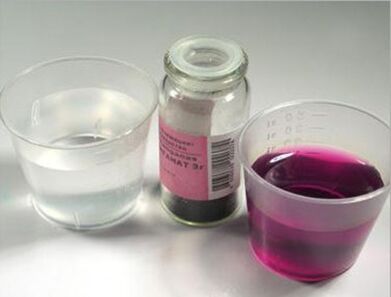The problem of fungal nail infection is quite common today. In the thickness of the nail plates and in the soft tissues surrounding the nail, there is a very advanced reproduction of the fungus, which is fraught with the complete loss of the nail without the possibility of even partial recovery. Therefore, if you suddenly find changes in their structure or color that are not characteristic of the usual type of nails, be sure to contact specialists for treatment. They will help to determine the presence of a fungal infection and, if necessary, differentiate it from caries on the nail, a manifestation of systemic diseases of the body.
Causes of toenail fungus

Following the usual hygiene rules and being careful about infection is the basis for the prevention of fungal infection. Failure to follow these vital aspects leads to disease. Most often, the fungus gets on the skin and nail plates when wearing someone else's shoes, taking bath procedures in public places such as baths, swimming pools, saunas, rarely or never washing your feet, and not fighting ingrown nails. and cracks in the rough skin of the heels.
If the condition and disinfection of pedicure tools is poor, it is also possible to get infected with fungus, although this is fraught with more dangerous infections such as infection and hepatitis B and C.
All these reasons lead to the fact that it is easiest for fungal microorganisms to colonize previously healthy tissues, creating the most favorable conditions for this, which only worsens.
What does nail fungus look like?
Symptoms of toenail fungus do not appear at the same time. Before a clear change in the nail plates in the affected toes in the area of periungual soft tissue structures, skin cracks of various sizes and depths can be observed in the interdigital zones. Join this itching sensation, tingling in the affected areas. The skin may begin to peel, redden in varying degrees of these symptoms. The main symptoms of fungal infection are changes in the nail plate. It can thicken or thin, and a change in the usual color of the nail is also characteristic: white, light yellow, dark yellow, brown, light green, color combinations. The nail edge ceases to be even, in advanced cases the nail gradually loses its structure, breaks, collapses. Eventually, delamination of the entire slab may occur.
If you look carefully at your friends, especially those who are already adults and older, you can easily identify the signs of nail fungus.
How to distinguish a crushed nail from a fungus?
First of all, a bruised nail is directly related to the fact that the toe was recently injured. External manifestations of a bruise occur not immediately, but after 2-3 hours. Before that, the finger may swell and turn red. In addition, the blood accumulated under the nail plate (and this is due to the outflow from the damaged vessels of the nail bed) is visible to the naked eye. Its mass first acquires a pinkish-red color, over time it becomes dark red, dark purple and even black. In parallel, the hematoma decreases in size and may appear as a point at the very end of the healing process. The soft tissues of the finger hold the swelling and may bruise. The severity of the symptoms depends on the force that caused the damage to the finger and nail plate.
Thus, the symptomatology and the actions of the patient before the appearance are fundamentally different from the clinic of a fungal nail infection, which is characteristic of a rotten nail. The difference is also evident in the mechanism of development of these diseases: they are infected with fungi, subsequent damage to the nail is associated with the activity of microorganisms, bruises are caused by injury and hematoma is formed. no microorganism is involved in the pathogenesis of damage to the veins of the finger. Also, nail fungus is treated by a dermatovenerologist or dermatologist, and bruises are closer to the activities of traumatologists and surgeons.
A method of checking fungal infection with potassium permanganate

Such a quick and easy recipe for diagnosing a fungus can be used at home. The main substance to determine is potassium permanganate (potassium permanganate), which must be diluted in pure water to obtain a weak purple color. Then you should put your feet in the colored water and soak for a few minutes. If you really have a fungus on your nails, then potassium permanganate will not stain the affected areas (they will be white). The healthy part of the nail plate will turn brown. So you can easily diagnose the disease.
After finishing this experiment, do not forget to treat your nails with hydrogen peroxide for disinfection. If you find a positive diagnostic result, be sure to contact a specialist. Now you know how to recognize nail fungus at home without much effort.
Diagnosis of nail fungus in the hospital certainly includes other more accurate laboratory methods to get to the bottom of the problem.
We treat nail fungus with medicines

As you know, many people prefer folk remedies for any disease to modern medical treatment by doctors. It is possible that nail fungus can be treated with folk methods in some cases, but there is no evidence base for this. Therefore, if there is a fungal infection of the nails, the main recommendation is to follow medical prescriptions and follow pharmacological treatment.
Depending on how far the disease has progressed, the forms of drugs are selected. Basically, they are divided into local (local) and general means of action. These drugs contain antifungal agents - a special group of pharmacological substances.
In the first stages of fungal infection, it is preferable to use local remedies (ointments, creams, gels). If the fungus has already entered the general circulation, this is the most severe result, or if the nail plate is significantly affected, the treatment is completed with general preparations (tablets or infusions of solutions).
The list of antifungal drugs prescribed for the treatment of fungal infections of the toenails includes: levorin, nystatin, fluconazole, ketoconazole, miconazole, amphotericin B, griseofulvin, itraconazole, terbinafine. These are the names of the active ingredients that form the basis of the treatment. Such funds can be part of various medicines. That is, the latter drugs are only trade names of the first listed substances. In order not to make mistakes with the remedy, its form of use and dosages, consult with specialists and follow their recommendations for treatment.
The most common treatments include:
- soda baths
- iodine treatment
- therapy with vinegar or vinegar essence
- treatment of fungus with laundry soap
Folk methods are effective only in the initial stage together with drugs.
Prevention of infection with nail fungus

You don't need to follow any special rules to protect yourself from fungal microorganisms, it's all simple if you include them in your daily routine. To begin with, refuse to wear other people's shoes, even in the most harmless situations, in your opinion. Be sure to use individual slippers and slates in baths, saunas, swimming pools.
Always take care of your feet, clean germs well with soap, dry your skin. Try to avoid shoes that make your feet sweat. Pay attention to the appearance of cracks in the skin of the feet, especially near the nail plates and in the interdigital spaces. Change socks daily and when soiled. If you don't like sweaty feet, then we recommend that you take an interest in special baths, they can really help you.
Fungal infection is a widespread disease among the country's population today. Many, perhaps, are not aware of its existence, referring to a rotten nail or signs of banal daily pollution. But as you have already seen, the fungus causes quite characteristic clinical manifestations. You only need to take a closer look at your feet and seek medical help for timely treatment, but it is better to deal with the prevention of infection.
















